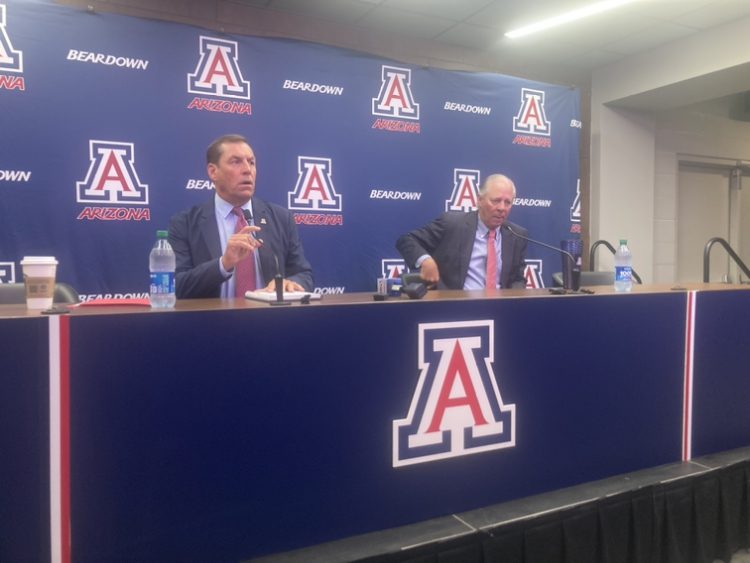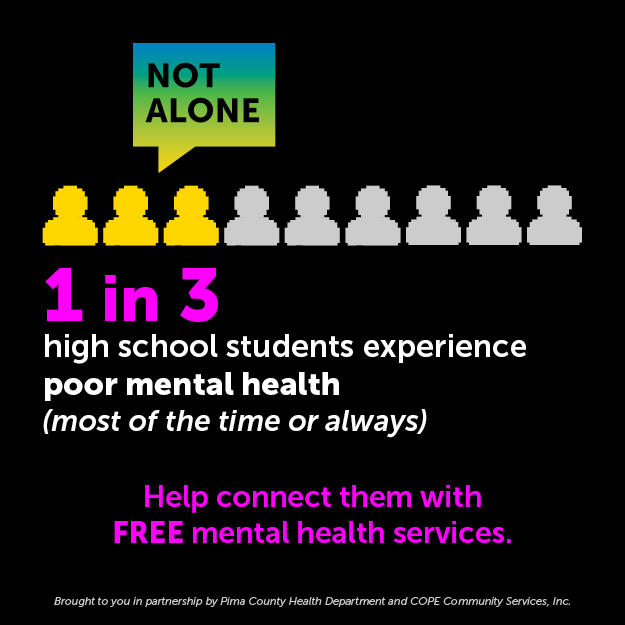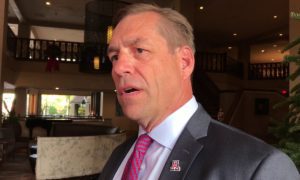Saying it was a chaotic and complicated time, University of Arizona president Robert Robbins said moving to the Big 12 was the best decision that could have been made.
“But I think we all just kept grinding and did the best we could to make the decision for the best interests of the University of Arizona,” he said on Monday morning during a 33-minute press conference at UA.
UA athletics director Dave Heeke sat next to him and many of Arizona’s coaches were there to lend support or hear more about the change from the Pac-12 to the Big 12, one that will happen in 10 months.
It’s a decision that started more than a year ago when USC and UCLA decided to bolt to the Big Ten, leaving the 100-plus year conference for more money and potential.

Why did it take so much time to get something done, either with the Pac-12 or any other conference (which turned out to be the Big 12)?
Well, for one Robbins said he was “very confident” a deal would get done but the market changed as did the media companies.
“But all the while I was confident that that we would get a deal that we would all like to keep this together,” Robbins said. “So I think things didn’t really change until right at the end. But it took long, longer than I thought.”
Robbins joked about quote he used earlier in the year when he thought something would be done by April 15 or tax day.
“I didn’t say what year but it still it took longer,” he quipped, “and I think the longer it took the more that the media companies could turn their temporary bad fortunes around and come back to the table the economy would get better. So, I thought the longer we waited, at least more recently, the better that will be, but there certainly came a time when we had to do it.”
That time finally came Friday night. It came after reports the deal was all but done to join the Big 12, only to learn hours later there was a last-ditch effort to continue to conference behind a contract with Apple.
“We were showing up together to sign in blood our grant of rights over to the Pac-12 Conference,” Robbins said.
But the reality of it came, too.
“But the base price (reported to be $23 million per team) an no linear coverage and that it was subscription based (was an issue),” Robbins said.
Then a call came from the Oregon and Washington schools to say they were headed to the Big Ten. Everything fell apart from there. The Pac-12/10 as we all knew it was over. Arizona will join the 12 Big 12 teams, along with Colorado, Utah and Arizona State.
“It was about the future,” Heeke said. “It was about stability, both financially and competitively. That was what was at the root of where we’re headed to today. Our intention all along was to see what the Pac-12 could pull together, what that deal might be. Ultimately, though, the environment in college athletics is moving quickly. It’s changing. We’ve got to be able to adapt, we need to make sure that we can put the university and our athletics program in a position to be nationally recognized, nationally competitive, to allow our student-athletes to compete at the highest level.”
The deal with the Big 12 is for nearly $32 million and both TV (linear) and streaming viewership.
“I’ve been consistent in what I’ve said in the press: I can’t think about entertaining an offer from the Big 12, I don’t even know what our deal looks like and I want to give that my full attention and see what the deal looks like,” Robbins said. “And I think all the presidents and chancellors in the Pac-12 did that. And I think Oregon and Washington certainly did that. And at the end of the day, I think it was just not a strong enough deal for everybody to stick together.”


















